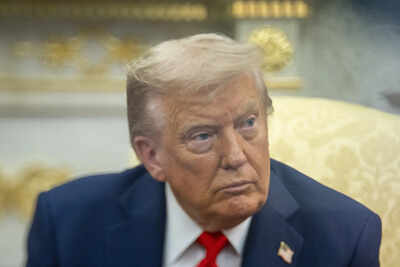ARTICLE AD BOX

Just weeks before the new academic year, the Trump administration froze $6.8 billion in education funding, leaving schools and families in turmoil. The funds, already approved by Congress, were meant to support after-school programs, teacher training, and services for English learners.
The decision sparked a multi-state legal battle that has now forced the administration to restore the money. But why did this freeze happen, and what made the White House change its mind?
What happened: The $6.8 billion freeze
The freeze affected programs that schools had already budgeted for, creating immediate uncertainty. These funds supported after-school and summer learning programs, teacher retention in struggling districts, and assistance for English learners. The Guardian recently revealed that nearly 1.4 million children were impacted, many from low-income families who rely on these programs for academic support and safe spaces after school. Districts were left unsure whether they could sustain essential services, forcing some to delay hiring or scale back activities.
Why the funding was withheld
The administration never issued a detailed explanation, but a spokesperson suggested the funds were being misused to advance a political agenda.
The move aligned with broader efforts by the Trump administration to reshape public education along conservative lines. Previous actions included threats to cut funding from states allowing transgender athletes to compete, attempts to remove LGBTQ references from sex education, and efforts to restrict in-state tuition for immigrant students. These policy choices indicate that the freeze was not merely a budgetary decision, but part of an ideological push.
The legal battle and state response
The freeze triggered an immediate backlash from states, which argued that the administration had acted illegally. Attorneys general from 23 states and two governors challenged the decision in court, citing the US Constitution and the Impoundment Control Act of 1974. This law prohibits the president from unilaterally withholding funds that Congress has allocated. The lawsuit emphasized that education systems depend on predictable federal support and cannot function when billions of dollars are suddenly withheld.
Why the administration reversed course
The decision to restore the funds came after intense legal and political pressure. Courts were expected to rule against the administration, creating a significant legal setback. Public reaction also played a role. The freeze disrupted planning at the start of the school year, a time when parents, educators, and advocacy groups were particularly vocal. Politically, the optics of denying essential education funding proved damaging, especially when programs serving low-income families were at risk.
The combination of legal vulnerability and negative public attention made the reversal unavoidable.
Impact on schools and families
With the funds restored, school districts can now move forward with programs that were stalled or scaled back. After-school and summer learning programs will continue to operate, teacher training initiatives can proceed, and support for English learners will remain intact. While this is a relief for millions of students and educators, the uncertainty caused by the freeze left its mark.
Some districts delayed hiring and program expansions, and the disruption highlighted how vulnerable education systems can be to sudden policy shifts.
The bigger picture
This episode reflects a broader trend of political interference in education policy. The Trump administration has consistently pursued measures that align with its social and cultural priorities, often clashing with state governments and education advocates.
The battle over the $6.8 billion freeze illustrates how education funding is increasingly used as leverage in ideological conflicts. Even though the immediate crisis is over, the underlying tensions remain, signaling that similar disputes may arise in the future.The restoration of education funding ends weeks of uncertainty for schools, but it also underscores how fragile federal support can be when politics takes center stage. While students and educators can now focus on learning, the fight over who controls the direction of public education is far from settled.



.png)
.png)
.png)
















 3 hours ago
3
3 hours ago
3








 English (US) ·
English (US) ·